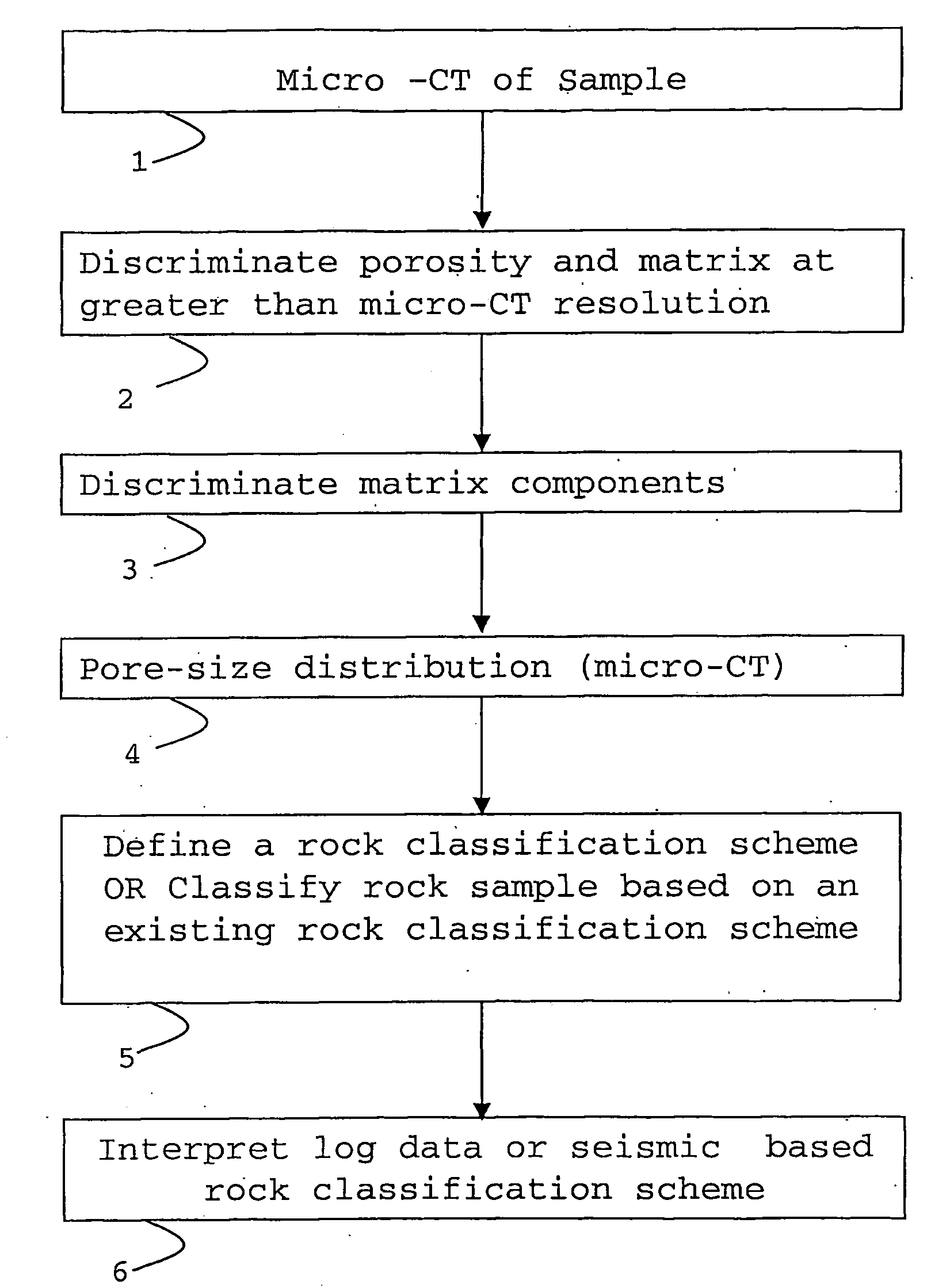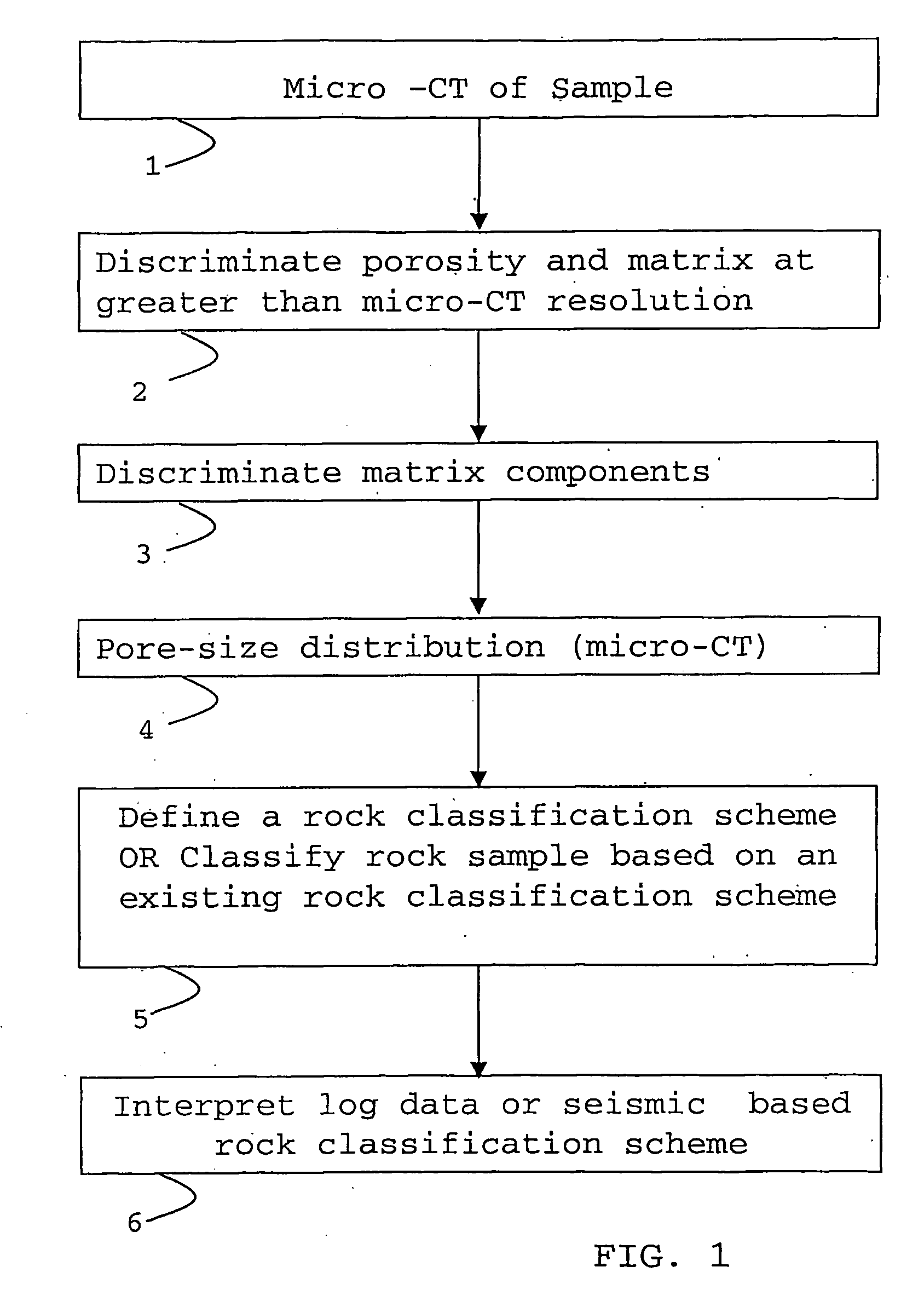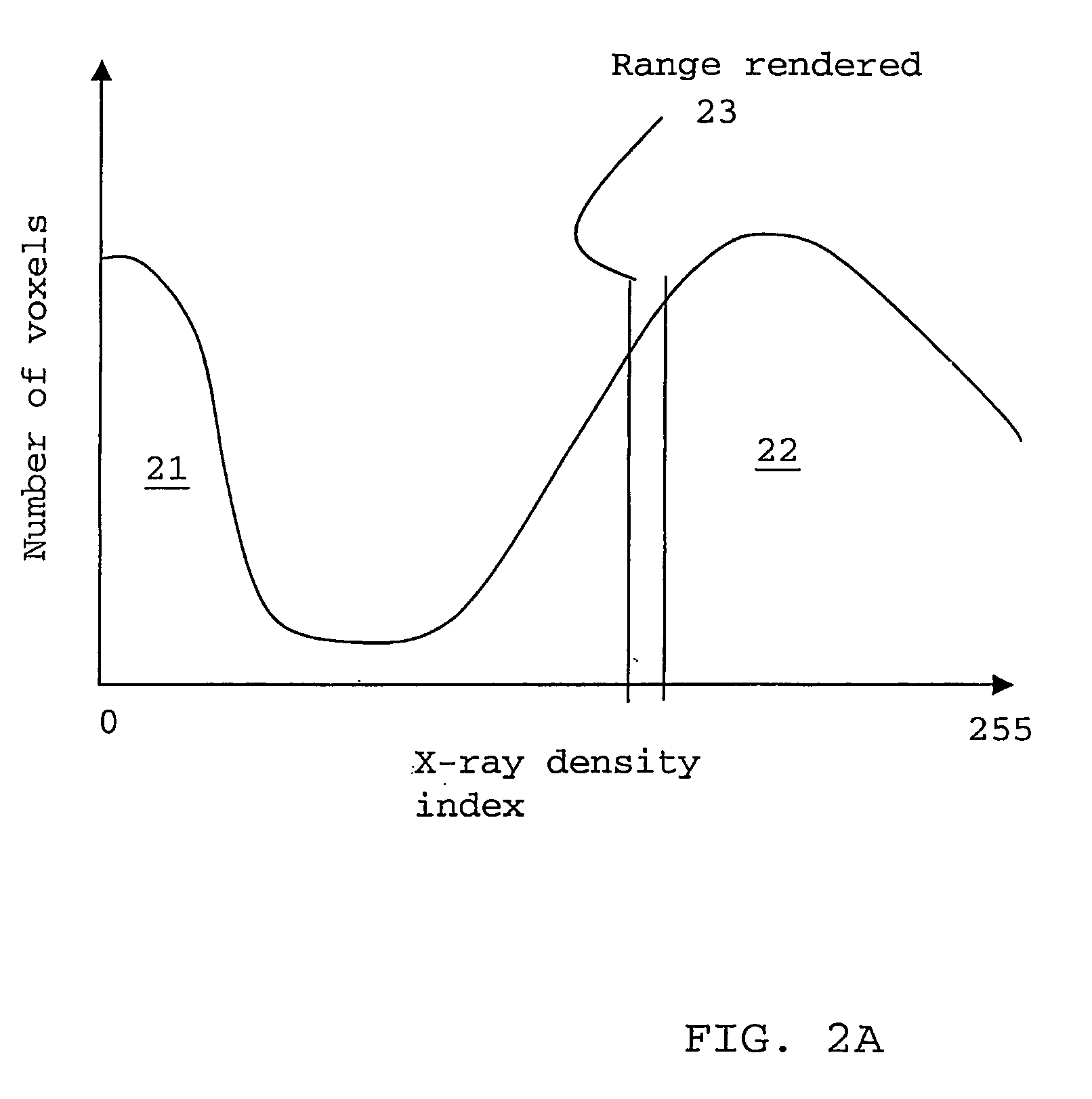Classification method for sedimentary rocks
a classification method and sedimentary rock technology, applied in the direction of material analysis, material analysis using wave/particle radiation, instruments, etc., can solve the problems of difficult to predict the production of sedimentary rocks, difficult to map the texture of sedimentary rocks using conventional logs, and low resolution
- Summary
- Abstract
- Description
- Claims
- Application Information
AI Technical Summary
Benefits of technology
Problems solved by technology
Method used
Image
Examples
Embodiment Construction
[0042]Examples of the steps in accordance with the invention are shown in FIG. 1. Each step is described below in greater detail.
[0043]In step 1, 1D, 2D, or 3D x-ray tomogram of one or more rock samples are generated. This may be done using any micro-CT facility, including bench-top devices, bespoke micro-CT systems, and synchrotron micro-tomography.
[0044]As an example, an x-ray tomogram of a portion of 4 inch diameter carbonate core was generated, to 165 μm resolution, and tomograms of various sub-samples therefrom where also created to a resolution of 17 μm. The tomograms were produced by acquiring a series of radiographs at different viewing angles around 360°. The micro-CT images had up to 889×889×765 voxels. The camera used acquires radiographs of 1024 pixels with a depth per pixel of 8 bits. The computer tomography (μCT) images were digitised and voxel values from the original sample were calculated using a grey scale and assigned an 8-bit value (0-255) relating to attributes....
PUM
| Property | Measurement | Unit |
|---|---|---|
| diameter | aaaaa | aaaaa |
| diameter | aaaaa | aaaaa |
| diameter | aaaaa | aaaaa |
Abstract
Description
Claims
Application Information
 Login to View More
Login to View More - R&D
- Intellectual Property
- Life Sciences
- Materials
- Tech Scout
- Unparalleled Data Quality
- Higher Quality Content
- 60% Fewer Hallucinations
Browse by: Latest US Patents, China's latest patents, Technical Efficacy Thesaurus, Application Domain, Technology Topic, Popular Technical Reports.
© 2025 PatSnap. All rights reserved.Legal|Privacy policy|Modern Slavery Act Transparency Statement|Sitemap|About US| Contact US: help@patsnap.com



